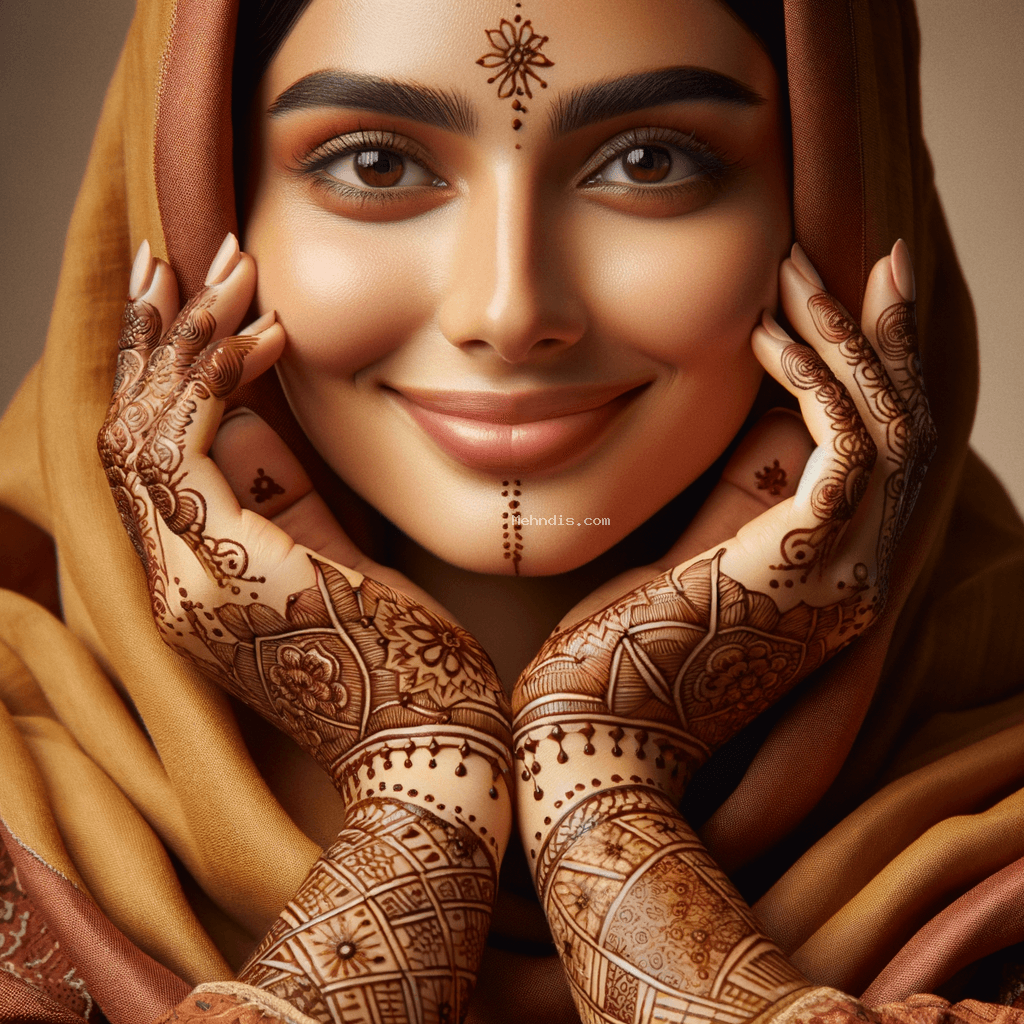One of the most captivating and intricate forms of mehndi art is the Indo-Arabic style Moroccan design, particularly popular during the auspicious occasion of Karwa Chauth. Cultural significance lies at the heart of this beautiful art form, as it is considered a symbol of love, prosperity, and marital bliss. The patterns used in this style are a harmonious blend of Indo-Arabic influences, resulting in an exquisite masterpiece adorned on a woman’s hand.
The Indo-Arabic style Moroccan mehndi design comprises an intricate fusion of geometric shapes, delicate floral patterns, and intricate lace-like details. These patterns are meticulously weaved together, creating a mesmerizing visual spectacle. The intricate nature of the design requires the steady hand and keen eye of a skilled mehndi artist. It is common to find motifs such as flowers, leaves, peacocks, and paisley swirls weaved into the design, each symbolizing different aspects of love, fertility, and beauty.
When applied during Karwa Chauth, this style holds deep symbolism. Karwa Chauth is a traditional Hindu festival celebrated by married women in India, where they fast throughout the day for the longevity and well-being of their husbands. The intricate mehndi design on their hands represents the deep bond between husband and wife, as well as the desire for a harmonious and everlasting marriage. Every swirl and pattern on the hand tells a story, creating a sense of anticipation and excitement for the auspicious event.
The mehndi patterns in the Indo-Arabic style Moroccan design flow seamlessly across the hands, starting from the fingertips and extending up to the wrists. The placement of patterns is strategic and carefully planned, allowing the design to appear as if it is an extension of the woman’s hand. The flow of the design creates a captivating visual effect, where each pattern connects with another, resulting in a cohesive and harmonious whole.
Traditional mehndi art uses henna paste, creating a reddish-brown stain on the skin. This stain gradually darkens over time, making the mehndi design more vibrant and eye-catching. It is a temporary form of body art that typically lasts for a week or two, making it a unique and ephemeral expression of celebration.
In conclusion, the Indo-Arabic style Moroccan mehndi design holds immense cultural significance, especially during Karwa Chauth. Its meticulously crafted patterns, seamless flow across the hands, and symbolism create a captivating visual representation of love, prosperity, and marital bliss. This beautiful art form, created using traditional henna paste, is a cherished tradition that continues to captivate hearts and minds around the world.
A different perspective of this Moroccan mehndi design rotated 45 degrees
How to Apply This Moroccan Mehndi Design on Hands
Follow these simple steps to recreate this beautiful mehndi design at home:
- Start by cleaning and drying your hands thoroughly.
- Begin with the central motif on the palm and work your way outward.
- Use a high-quality mehndi cone for precise application.
- Pay special attention to the fingertips and wrist area.
- Allow the mehndi to dry completely before removing the paste.
Another angle of this Moroccan mehndi design rotated -30 degrees
Perfect for Karwa Chauth
This design is particularly suitable for Karwa Chauth celebrations, where intricate mehndi patterns are traditionally worn to enhance the festive spirit.
Disclaimer:
“The content on Mehndis.com is for informational and inspirational purposes only. Always perform a patch test before applying Mehndi. Read our full Disclaimer for details.”
🌿 Want mehndi that’s gentle on your skin but bold in color?
Sonal Mehndi Premium Cone from Mehndis.com is handmade with love, care, and 100% natural ingredients.
💚 No chemicals. No shortcuts. Just rich, long-lasting beauty.
🌟 It’s more than just mehndi — it’s your moment.
